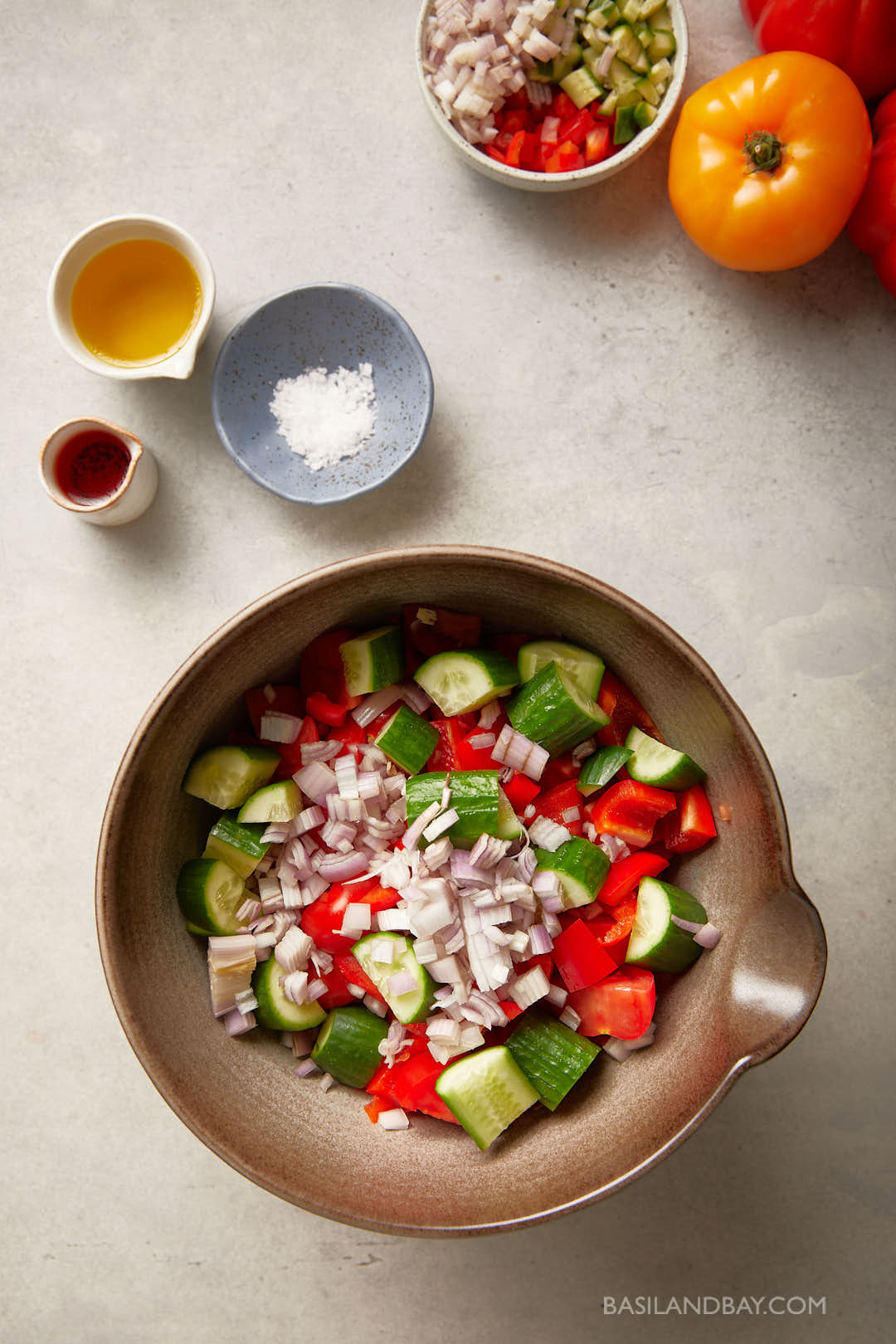This post may contain affiliates. Please see my privacy policy for details.
Last Updated on June 22, 2025 by Megan Jones
Having lived in Spain for 6 years, I have had my fair share of Gazpacho and Spanish Tapas. Where we lived on the South easterly coast, the Gazpacho we had in bars and restaurants was always served simply in a glass, sometimes over ice and with a drizzle of good quality olive oil.
It's an ideal summer recipe because you don’t need to turn the oven or the hob/stove on, and as a result, you’ll get a refreshing Spanish chilled tomato soup and your kitchen will stay cool.

Whether you serve it as a starter, a light lunch, or even a refreshing snack. This Gazpacho / Spanish chilled tomato soup is sure to transport you to the sun-drenched shores of Spain. So, embrace the summer heat, grab your blender, and treat yourself to this chilled culinary delight. ¡Buen provecho!
Ingredients:

Top Tips!
Dont miss out the Flakey Sea Salt - This is used to draw out the liquids from all the chopped vegetables, this starts to 'break them down' and makes for a more flavoursome gazpacho with more depth of flavour.
Vinegar - Sherry vinegar is the most traditional and commonly used type of vinegar in gazpacho. However, other types of vinegar such as red wine vinegar or apple cider vinegar can also be used.
How to make:

- Start by preparing your garnishes: these can then sit to one side in a bowl whilst you are preparing the main soup ingredients.

- Cut up the rest of the soup vegetables: add them all to a bowl and season with the salt. Set to one side for 30 mins at room temperature to let the flavours develop and the salt to draw out the natural juices from the vegetables.


- Chill for at least an hour before serving.

- Serve into glasses for a traditional Spanish snack, top with the reserved veggies and a good drizzle of olive oil. Serve with crusty baguette if you want to dunk!
Love this tomato soup? Try my cozy spicy sweet potato soup—a warm, hearty sister soup perfect for chillier nights. Or, for more all‑things‑tomato, don’t miss my tomato tart—a savory, flaky twist on tomato‑forward flavors.
If you make this recipe, be sure to leave a review and a rating below. This helps others decide whether to make my recipes, and also helps it appear in Google searches – so thank you for supporting me! I love it when you share pictures of my recipes on social media, be sure to tag @basilandbay when you make something!

Easy Blender Gazpacho
Equipment
Ingredients
- 900 grams tomatoes
- 2 mini cucumbers* or Persian cucumbers
- 1 medium red pepper ¼ for garnish rest for soup
- ½ large shallot 2 teaspoon reserved for garnish if desired
- 2 cloves garlic minced
- 2 Tablespoon Sherry vinegar **
- 3 Tablespoon Olive oil + extra for garnish
- 3 Teaspoon sea salt Flakey
Instructions
- Start by preparing your garnishes; Thinly slice a ¼ of a red pepper and finely diced it, as well as cutting 1 of the cucumbers in half lengthwise and then slicing from top to bottom to create thin slices, then spin the cucumber and then cut it horizontally to create little cubes. Alternatively you can use one of the viral instagram vegetable chopper to make this process super quick!!
- Cut up the rest of the soup vegetables, add them all to a bowl and season with the salt. Set to one side for 30 mins at room temperature to let the flavours develop and the salt to draw out the natural juices from the vegetables.
- Chill for at least an hour before serving.
- Serve into glasses for a traditional Spanish snack, top with the reserved veggies and a good drizzle of olive oil. Serve with crusty baguette if you want to dunk!
Notes
- ½ large cucumber can be subbed if you can't find mini cucumbers
- Apple cider vinegar or white wine vinegar can be used if you don't have sherry vinegar


Leave a star rating and review, ask a question, or share a tip!